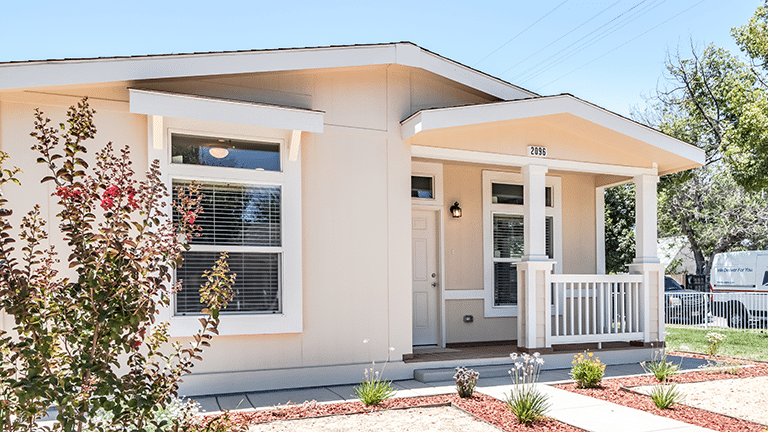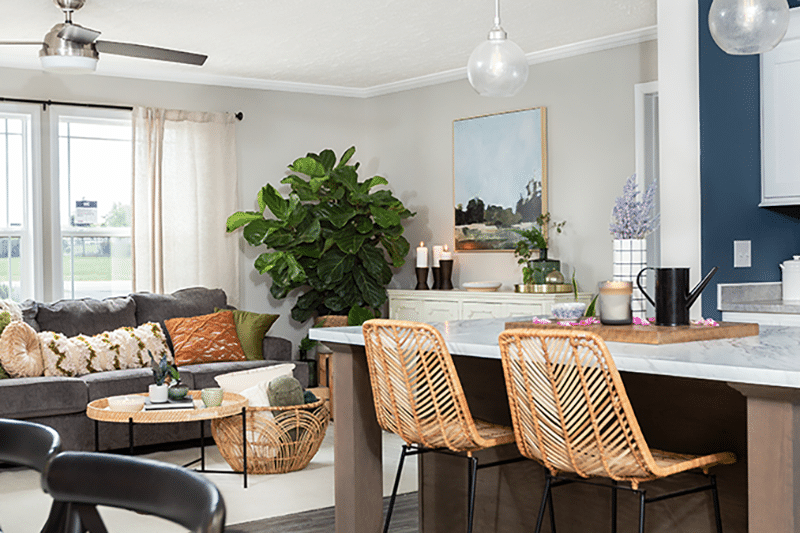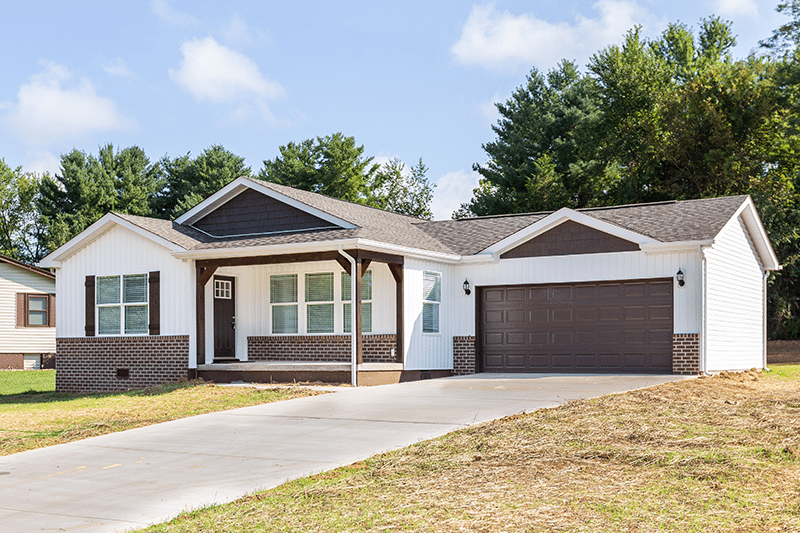Bridging the gap for sustainable homeownership with Next Step Network
Featured Members

It’s hard to spot the difference between a modern factory-built home and a site-built one. Next Step partnered with Neighborhood Partnership Housing Services, Inc. (NPHS) to place this 3-bedroom, ENERGY STAR-certified home in Bernardino, CA, providing an affordable path to homeownership.
Manufactured homes, built in factories often at a lower cost than traditional homes constructed in place, play a crucial role in addressing affordable housing needs across the United States. While the industry has faced challenges, like limited financing options and stigmas associated with “cheap” manufactured homes, it has been making strides in quality and construction standards, energy efficiency, and modern design.
Stacey Epperson, President and CEO of Next Step Network, is focused on the positive economic impact that high-quality, energy-efficient manufactured housing can have for families. She is working to build relationships between the factory-built housing industry, housing developers, affordable housing advocates, lenders, and other key stakeholders to deliver factory-built homes as a viable, sustainable homeownership solution.
Click to listen to a conversation between Epperson and Meredith Sumpter, CEO of the Council for Inclusive Capitalism. Read a summary of the interview below.
Tell us about why Next Step Network wants to help create a more inclusive housing market.
Next Step believes that owning your own home is part of the American dream. It lifts people out of poverty or helps them break generational poverty. But not everyone’s benefiting right now. In fact, the U.S. homeownership market has failed, and continues to fail, many households across the country.
Owning your home still remains one of the best determinants of wealth creation and equity building for a family. It may help you put your child through college, like it did for me. Once you start building equity, you have an asset. Yet there are millions of households, particularly communities of color and low income communities, that have really been barred from homeownership. The lack of affordable housing and a legacy of exclusionary housing policies have made it difficult for some of these communities to buy their first home. Couple this with a national supply gap in housing and what you have is a really difficult, unfair situation.
The U.S. is about four and a half million units short of new housing, and home builders have largely left the starter home market. This is a problem, because the average American household can probably afford a mortgage of about $230,000, but the median house sale is about $460,000. We have a low inventory, high cost, and we have adults in the Millennial generation coming of age to buy their first home putting a lot of pressure on this market. Something needs to change.
Why are we seeing homebuilders exit the starter home market at a time when there is such a critical need for starter homes?
Many cities across the country have made it difficult to get approvals to build new homes. So the primary issue is zoning and the permitting process. Then there’s the housing crash of 2008 which resulted in a lot of builders leaving the marketplace. Then COVID happened, which impacted the cost of materials, supplies, and labor. So in order for builders to get the margins they need today, they need to build a more expensive home.
Let’s talk about climate resiliency in your work. We know climate change is affecting nearly every industry and community. How is Next Step Network addressing this?
Climate change is and will continue to reshape our communities and our planet. And so part of our mission is rooted in the belief that we need not only to support households by lowering their utility and energy costs, but also as being really good stewards of the environment. All of our new homes will be all-electric, with efficient heating and cooling systems. We’re also interested in testing more solar-powered manufactured homes with the goal of getting to net zero in our own process.
Next Step Network works exclusively with factory-built houses, or manufactured homes. These types of homes have been misunderstood for decades. How have attitudes changed over the years?
I’ve been working in this field for about 20 years. When I got started in Appalachia, I would say that affordable housing developers had a strong distaste or disdain for the manufactured housing industry. They thought of it as part of the problem and never part of the solution. There are also a lot of stereotypes about people who live in these homes.
Today we’re seeing the “HGTV effect” of the tiny home and new generations are thinking about living smaller. It’s no longer foreign for a home to be built in the factory. In fact, we’ve been working with IKEA, who’s been supporting a lot of our systems change thinking, and they undertook a national homebuyer study for us. One of the things we learned is that 46% of the homebuyers that were surveyed were interested in buying a home built in a factory. That really has encouraged us to think that attitudes are changing now.


Next Step Network works frequently with home builder Clayton to create homes for clients in communities across the United States. Clayton’s CrossMod®️ models, pictured above, incorporate Next Step’s recommendations for high-quality materials and efficient all-electric energy. Images courtesy of Clayton.
What are the private sector innovations that you’re seeing to help build the more sustainable communities that America is needing?
Developers have been circling this industry, but they haven’t made a major commitment. We recently formed a new partnership with Clayton Homes, who is working with us to establish quality and energy standards for factory-built homes, built at scale. They have 13 factories that give us national coverage in most markets, and they have a standardized plan system and support for developers. We can take the best from both worlds to create a joint strategy.
It sounds like moving from singular homes to subdivisions, with Clayton Homes and with private developers, is your own next step in this work. Could you share with us a little bit more about this?
For many years we worked with solely nonprofit housing developers, and they would take on projects that might be 20 to 40 units, or sometimes smaller. Those projects were very deep in the community, typically in underserved communities with the lowest incomes, and they required public funds and philanthropy — making them a little harder to do. Of course, those projects are still very important to us, but we want to go deep and wide with our work. This is why we decided to partner with mission-driven private developers who would build to Next Step’s standards. We would certify their plans and specifications, and they could market it under the Next Step brand. An example is our largest project at the moment, called Kilpatrick Woods. It’s a subdivision with 241 homes. The developer we’re working with really knows and understands how to develop, so we can focus on bringing homebuyer education support, community outreach, and downpayment assistance that makes the homes more affordable for new homebuyers. We’re also working with local nonprofits to set up referral systems to help them also meet their goals.
What challenges remain to be solved for housing to be leveraged as an economic booster for working families?
One of the largest obstacles we have is access to capital, particularly access to patient capital, or mezzanine equity or debt position. Usually, nonprofits have to write grants and wait for a number of years and hopefully get something that would make it all work, so it’s not a consistent flow.
A tax credit would help change all of this; and there is a tax credit for single family production that has been introduced in the House of Representatives at the nationwide government level. If that were to move forward, then that would make this easier. So that’s our first option. The second one, I would say, is that zoning for new, affordable housing has to change. Right now, single family homes for manufactured housing are zoned out of probably most cities, so it takes changing local code — and that takes time. We need resources to continue those zoning battles, education, and all the upfront work. And then we need to continue to educate the public to come out and support a project to make sure that they move forward in these local communities.
What are your thoughts on “business at its best” and what it means to Next Step Network?
I think business is best when it gives more than it takes. We need businesses really paying living wages, so we can get people into our homes. We need to make sure that we’re not extracting, but we’re adding. And business has to be a net positive for people, communities, and the planet. When we’re thinking about giving more than what it takes, let’s bring everybody to the table so we can make this positive change.

